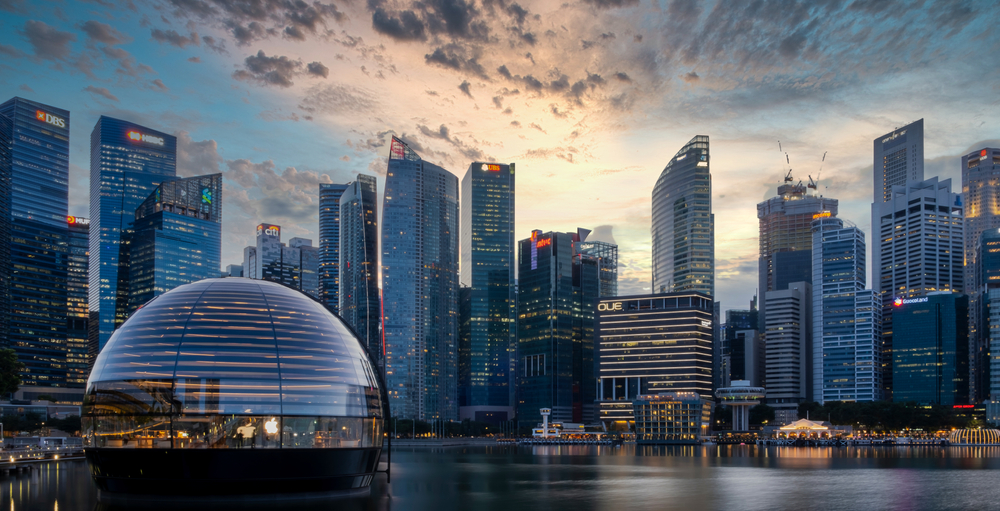The Singapore property market has long been a beacon of resilience and opportunity in Southeast Asia, captivating investors and homeowners alike with its dynamic landscape. In recent years, this vibrant sector has witnessed a remarkable surge, driven by a confluence of factors that reflect both local nuances and global trends.
From the burgeoning population and robust economic performance to government policies that foster stability and sustainability, the forces at play are as varied as they are impactful. As we delve into the three key factors propelling this growth, it becomes clear that Singapore’s real estate scene is not just a reflection of current demands but a canvas for future possibilities, echoing the aspirations of its residents and investors.
Join us as we explore the intricate layers fueling this evolving market and what they mean for the future of property in the Lion City.
Robust Economic Fundamentals and Foreign Investment

Singapore\’s property market thrives on its robust economic fundamentals, which serve as a magnet for both domestic and foreign investors. The city-state\’s strategic location at the crossroads of major trade routes, coupled with a business-friendly regulatory environment, creates a fertile ground for capital influx.
Not only does the country boast a resilient GDP growth trajectory, but it also features a stable political climate and a transparent legal system that instills confidence in global investors. Residential developments like Upperhouse reflect the high standards and investment appeal that define Singapore’s real estate landscape, attracting buyers who value quality and long-term returns. Additionally, the strong presence of multinational corporations and a highly skilled workforce contribute to a dynamic economy, further enhancing the appeal of real estate as a lucrative investment.
As foreign capital flows continue to pour into this vibrant market, the interplay between economic strength and investment potential catalyzes growth, positioning Singapore as an unstoppable force in the region’s property landscape.
Population Growth and Urbanization Trends

Singapore’s rapid population growth and urbanization trends are reshaping its property market in profound ways. With a diverse demographic tapestry, the city-state has welcomed an influx of residents from around the globe, drawn by opportunities and an enviable quality of life.
This surge in population has inevitably led to a pressing demand for housing, both private and public, fueling property prices and stimulating new developments. Simultaneously, urbanization has prompted government initiatives to enhance infrastructure and community amenities, making urban living not just appealing but necessary.
The dynamic interplay between these factors cultivates a vibrant real estate landscape, with new neighborhoods sprouting up and older ones onestransformingn. As the skyline continues to evolve, so too does the appetite for both residential and commercial spaces, solidifying Singapore’s position as a compelling player in the global property market.
Government Policies and Infrastructure Development
Government policies play a pivotal role in shaping the landscape of Singapores property market, driving robust growth through strategic infrastructure development. The governments proactive approach, exemplified by initiatives such as the Urban Redevelopment Authoritys Master Plan, not only maximizes land use but also enhances the liveability and functionality of urban spaces.
Investment in transport networks, like the expansion of the MRT system, significantly eases connectivity across the island, creating vibrant residential and commercial hubs that attract both local and foreign investors. Furthermore, policies to encourage home ownership, such as grants and subsidized loans, empower citizens to invest in real estate.
Together, these efforts foster a dynamic environment that stimulates demand, pushing property values higher and ensuring that the market remains resilient and appealing amidst global economic fluctuations. As Singapore continues to evolve, the synergy between government initiatives and infrastructure advancements will undoubtedly fuel sustained growth in the property sector, making it an enticing prospect for stakeholders in both the short and long term.
Conclusion

In conclusion, the growth of the Singapore property market can be attributed to a confluence of factors, including economic stability, government initiatives, and evolving consumer preferences. As investors and homebuyers alike seek properties that resonate with modern living standards, developments like Upperhouse stand out as prime examples of how the market is adapting to these changes.
By focusing on sustainability, innovation, and enhanced lifestyle experiences, Singapore’s property landscape continues to thrive, making it an attractive destination for both local and international stakeholders. As these key factors continue to interplay, the future of Singapore’s real estate market appears promising, poised for sustained growth and development.


